Todd Amenrud | Originally published in GameKeepers: Farming for Wildlife Magazine
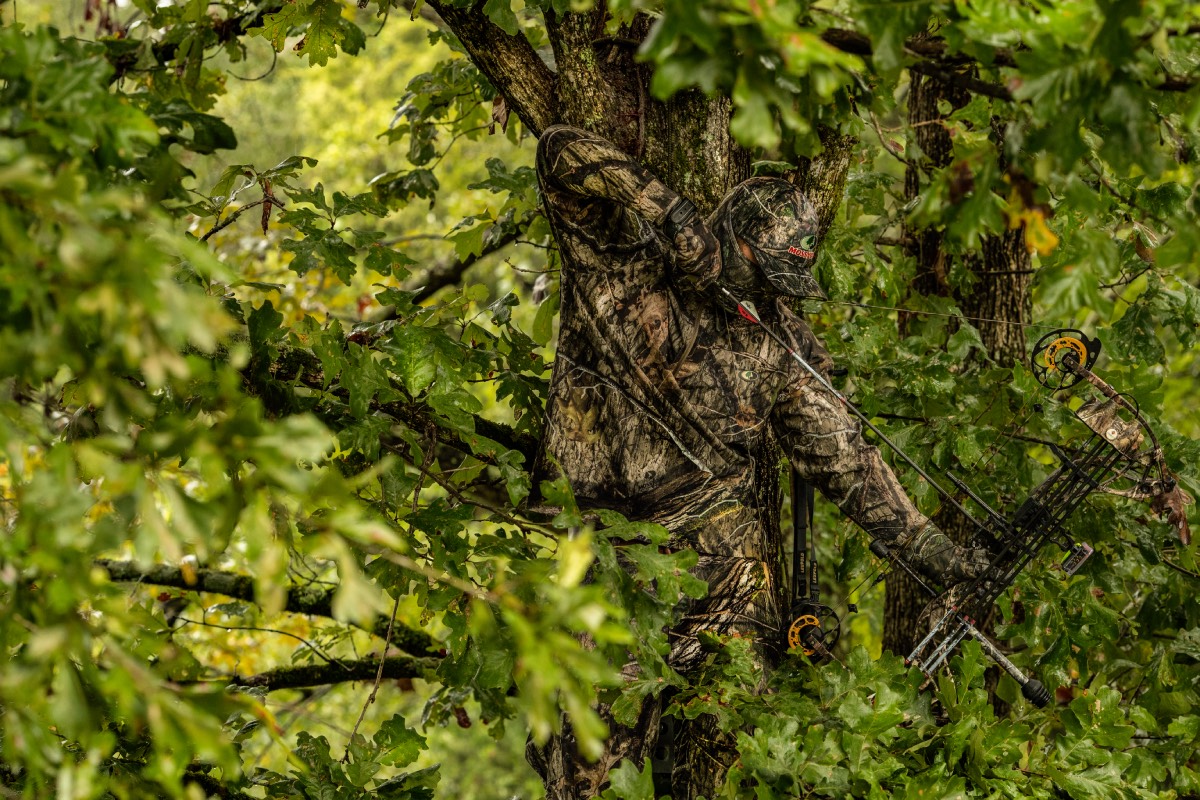
Pictured Gear: Bowtech Archery and Mossy Oak Country DNA
“The main reason most of us became gamekeepers is because we love to hunt, and many of us enjoy doing it with archery equipment. Our bow setup is one of our most important tools so we must make sure we’re lethal and competent with it before attempting to harvest an animal.”
Whether you are new to the sport or a long time archer, many questions have to be answered when choosing your bow, arrows, hunting heads and accessories. We are gamekeepers, and most of us are because we love to hunt. The tools we use to harvest our quarry and our skills must be honed before we try for the kill. I have a passion for the sport of archery and I try to convey that excitement to as many people as possible, so I’ve taught archery lessons and bowhunter education classes for many years.
What I find very interesting are the questions that beginners have. Where does an archer begin when choosing equipment? It’s a good idea to learn how to choose the right bow and arrow so you get the right fit, feel and options for your needs and budget.
One Size Does Not Fit All When it Comes to Your Archery Set
To commence this search, unless you know exactly what you’re doing, DO NOT order your equipment online, through the mail, or buy it in a discount store where you’re not going to get proper help. This is not like purchasing a deer call or a treestand, one bow does not fit everyone. Unless you are educated at bow setup you should go to a qualified archery pro-shop. In fact, one step further, if the pro-shop isn’t set up to “paper-tune” your setup (shoot your arrows through paper), I would keep looking for a shop that can.
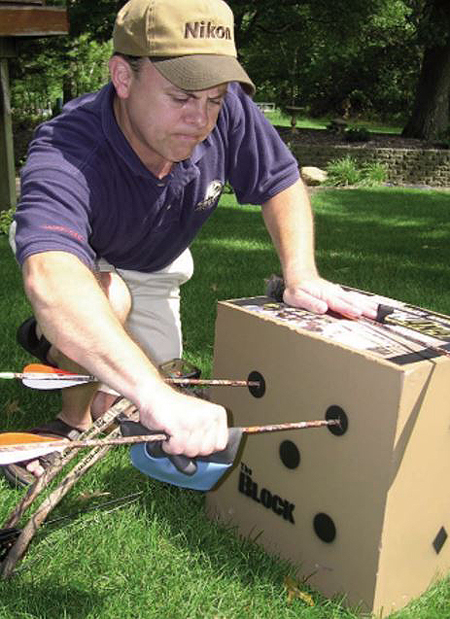
arrows. A good broadhead target like The Block will absorb
hundreds of shots with broadheads. An old rubber glove makes a
great arrow-puller.
You must have your outfit tuned for optimum arrow flight. It’s possible for you to hit a bulls-eye, yet your setup may still be out of tune. Needless fish-tailing or porpoising of the arrow is what I’m talking about. Anytime your arrow is flying any way but perfectly straight, energy is lost. An archery pro shop is going to be able to set you up with the proper equipment, but more importantly, make sure it's working efficiently before you leave.
The Ol’ Stick Slinger
It’s totally mind-boggling the number of models of bows on the market today, how does one know where to begin? There are speed cams, single cams, cam and ½, round wheels, energy cams and a plethora of other choices. Then you will need to combine that with what kind of riser and grip you prefer, draw weight, string and cable type, let-off, limb design, axle-to-axle length and a number of other factors.
My best advice is to go into one of these pro shops, tell them what you'd like to spend, what you want to do with the bow, and then ask for several options. If they tell you "this is the only bow you should shoot,” don't believe them, turn around, walk out and find a different dealer. With today's technology, one bow manufacturer makes a bow that will hit a ten-ring or put down a trophy buck just as good as the next one. Pick up each of the choices they provide and decide which one feels good to you.
How much should a bow cost? You don't need a $1,000 bow to get the job done. On the other hand, don’t skimp. If you plan on spending $200 on a bow at a garage sale, you’re going to be back next year having to upgrade. Your arrows and accessories are going to cost you too, but the bow is not where you want to skimp.
Nock This
Once you choose a bow that feels good to you and fits you properly, you’ll need arrows. I remember 30 years ago arguing with associates from the largest aluminum manufacturer (they also make baseball bats) about how carbon arrows were so much better than their aluminum shafts. Basically, with every desirable characteristic you want in an arrow, carbon arrows are better. They are stronger, faster, flatter shooting, straighter, absorb more energy from the bow, retain more energy in flight, and penetrate deeper than aluminum, wood, or other composite shafts. Since then, that aluminum arrow manufacturer bought the largest carbon manufacturer for their technology and now makes their own carbon and composite shafts.
Examine the arrow shafts carefully before you buy. Many shafts are made so that the carbon weaved sheets overlap on one side of the shaft when they are rolled. This creates an inconsistent flight because of the inconsistent wall thickness. If you look closely, you can actually see this with your naked eye. You want shafts that match up exactly so there is no overlap. Consistent wall thickness means consistent flight.
Another feature I would look for is a “weight forward design.” Arrows fly straight because of several principles, one being that there is more weight on one end of the projectile. You obviously do this by adding a point/head to the arrow, but some shafts already come with extra weight on the broadhead end of the shaft. This isn’t necessary, but it makes perfect sense to me.
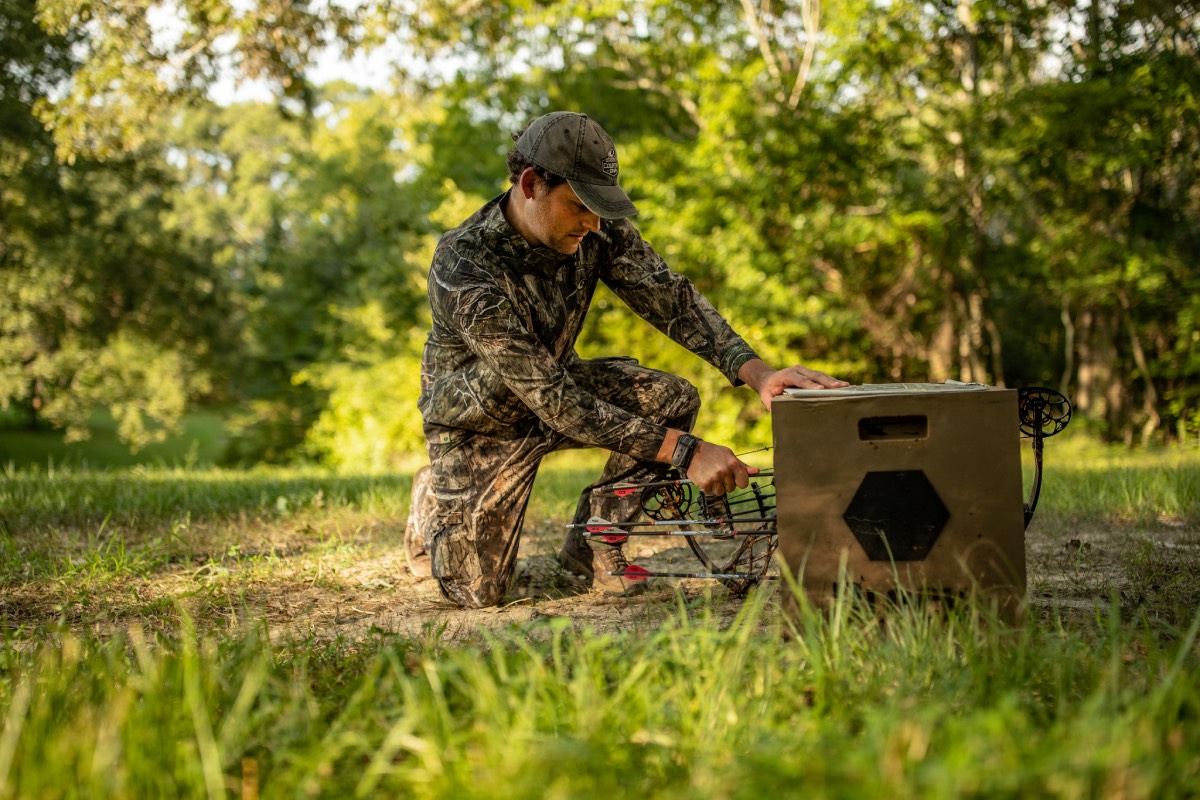
No matter what you choose for gear, you must make sure that your setup is tuned properly before using it hunting. The easiest way to tune a bow is to shoot your arrow through paper, examine the hole it produces and then adjust your setup until you have a clean “pencil hole.”
Some shafts may also be treated with advanced carbon fiber which makes them stiffer and lighter. This helps to dramatically improve recovery from archer’s paradox (the flexing of the shaft back and forth when it is released). Actually this technology also adds weight and strength. The extra weight helps improve down range inertia.
Make sure that you choose the proper “spine” for your shaft. Every arrow should flex, or bend, when the string is released. The idea is to have just the right amount of flex and then to recover to perfectly straight as fast as possible. If you are familiar with shooting a rifle, you most certainly wouldn’t expect to hit the same hole with a different grain bullet and a different load of powder. Consistent spine is very important — anytime that an arrow is flying any way but perfectly straight, energy and accuracy are sacrificed. Again, a qualified pro shop will help you to choose the proper spine. In addition, every arrow manufacturer has a chart that will guide you to the proper choice.
There’s also a choice you’ll need to make on fletching. I’m old-school here…. I prefer 4-inch feathers. Again, we go back to the principles of arrow flight. Feathers stabilize the shaft better than plastic veins. Also, one plastic vein weighs as much as all three feathers. Sure, there are pros to plastic veins, they hold up better when wet and are more rugged than feathers, but I believe that feathers help to stabilize a shaft better, especially when you’re pushing a hunting head in front of the projectile. If I were going to hunt exclusively out West, where you may see longer shots and heavy cross-winds, then I may go to a 3-inch vein with less profile.
Relax, Have a Rest
Now that you have your bow and arrows, another area I wouldn't skimp on is a rest. Making sure that your arrow is flying at its optimum efficiency is very important. Your rest is probably the biggest factor, aside from shooting technique and proper arrow spine, in getting your arrow to fly right. There are so many styles - which should you pick? Again, tell your pro-shop what you’re going to be doing with the bow, and whether you want to shoot fingers or release, and they'll be able to help you.
I prefer the newer style drop-away rests. With these rests, there’s nothing to interfere with the shaft as it leaves the bow. Again, it depends upon what you’re going to do with your setup, but for whitetail treestand hunting you can’t beat a drop-away.
A View to a Kill
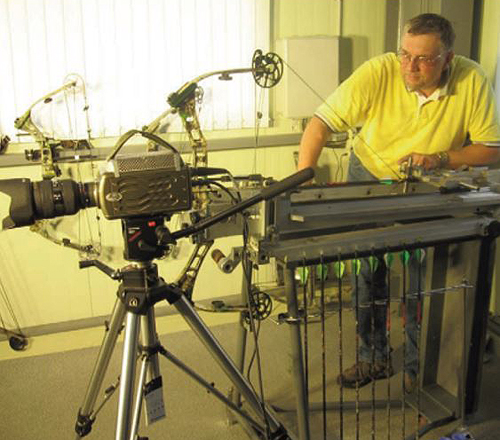
Here, Lennie Rezmer, with Carbon Express, is testing different shafts in a
shooting machine. The machine ensures there is no human error and
each shot will be exactly the same.
When it comes to sights, personally I go simple. I want something that can be tightened down and won’t come loose or break. If I’m out in the bush somewhere and my fiber optic strand just came out of the sight pin because it got caught on a twig when I hoisted my bow up the tree – I’m goofed.
With the flat trajectory that I get out of my setup I only use one or two fiber optic pins in a “fixed-pin” sight for typical whitetail hunting. I may add a pin or two if I’m going out west to hunt elk or pronghorn, where I might see a 60- or 70-yard shot, but this setup is for killing animals not punching a ten-ring. For 3-D or target shooting, I have a separate bow with a pivoting sight that can be dialed into the exact yardage on the spot. Sight selection is entirely personal preference — one pin eliminates confusion, but multiple pins can build your confidence – your choice.
I also suggest a peep sight or a kisser button. I can say that in almost 40 years of bowhunting I can never remember standing in perfect archery form when shooting at an animal. You’re always bending at the waist (when shooting from a tree stand), contorting around a tree or leaning under a branch. A peep sight or kisser button just helps you to be consistent.
Fastened to the “Business End”
Twenty years ago, along with several colleagues, we did a test to document and prove the difference in penetration between carbon and aluminum arrows. We knew that carbon penetrated better, but we wanted to prove it and see by how much. We shot into 3D targets, ballistic foam, block targets, hay bales and several other mediums. And to see the difference between hard and soft tissue, we also shot through particle board, steel plates, plywood and we even kept the shoulder blades from a couple bears that we had harvested that spring – so if anyone asked, we tested “real bone.”
We shot out of different bows, with different rests and we used different arrowheads/hunting heads. Before we removed the arrows from each medium we put a piece of masking tape around the shaft up to where the arrow had penetrated, then we removed the arrow and measured the penetration. What surprised me was; this test taught me much more about broadheads than anything else.
We performed this test when expandable broadheads were just hitting the market. After seeing the results, when it came to penetrating both, hard and soft tissue, I wanted a broadhead with a durable, hard chisel point with a small sleek design, similar to the traditional Muzzy 3-blade. Certain style heads did great penetrating some mediums, but overall, with both hard and soft tissue this style head performed best.
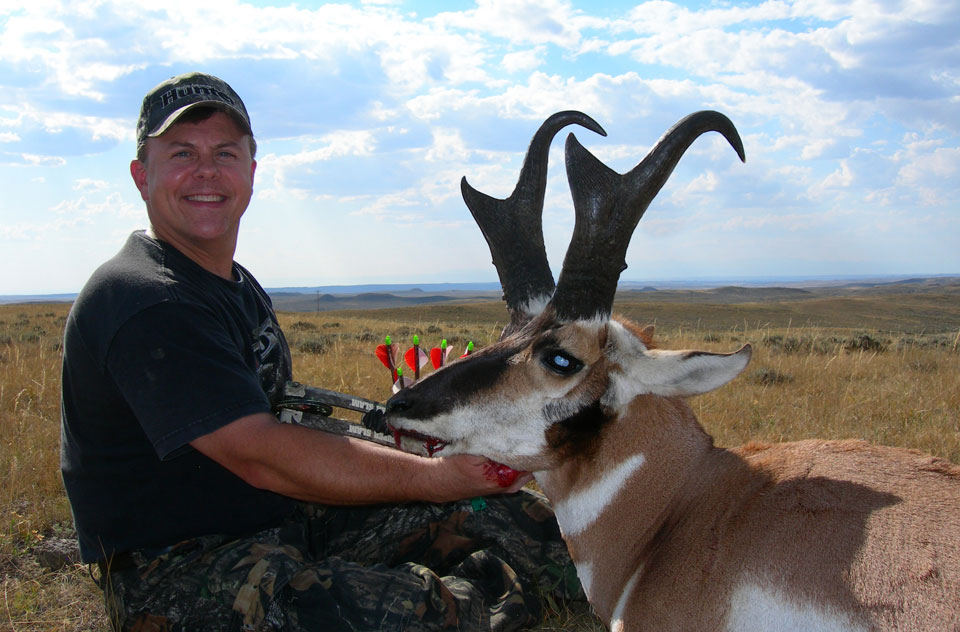
At that time the technology in expandable heads just wasn’t there. Most were the traditional jackknife-style and tried to offer super wide cutting diameters. These wide diameters and ridiculous blade angles severely reduced penetration. The jackknife style heads would often kick-out from the target when hitting at an angle or explode when contacting hard objects. Some would enter the target and never deploy the blades. As you know, archery harvested animals die from blood loss. As you can imagine, there’s not much blood loss if the razor blades don’t deploy. I wouldn’t have given you two-cents for an expandable head back then.
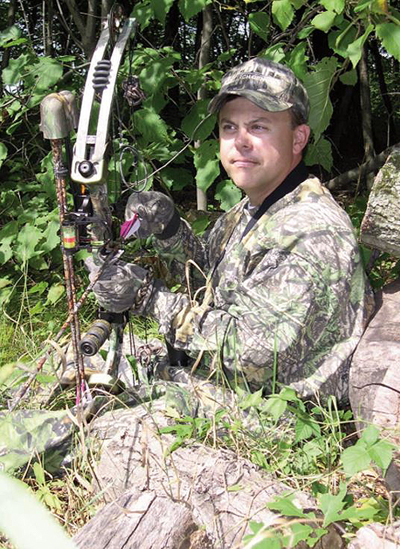
until it becomes second nature. Practice realistic
conditions. Many archers hunt from a treestand, but few
practice from one. If you hunt from the ground, do you
practice while kneeling or sitting? You need to know how
you and your equipment will perform before the moment of
truth.
Let me tell you…a lot has changed with expandable heads since then! What really changed my mind were the blood trails I saw. I fought against all expandable heads for a long time because of the results from our tests. But then I started going on blood trails caused by Rage Broadheads. I have never been on more unbelievably great, consistently produced blood trails than I’ve seen produced by Rage Broadheads. I have no affiliation with the company; they just make a great product and that’s true. The way the blades deploy is different from the old jackknife style, using up very little energy, retaining it for great penetration. I would definitely tip a shaft with a Rage head. There are other expandable styles with this new technology. My advice would be to try a few until you find what works best for you.
One major point is that you need to practice with your hunting heads. Don’t believe what some manufacturers claim that their broadhead will hit exactly where your field-points do. Obviously, we want to use broadheads that are the same weight as our practice tips, but even if that’s the case, your hunting heads are shaped differently, they’re probably a different length and that changes how archer’s paradox affects the shaft (even if only a small amount). You might get lucky and your broadheads may hit where your field-points do, but you MUST know this for a fact BEFORE you shoot them at an animal. Never use the same practice broadheads in your hunting quiver unless the blades are replaced so they are surgically sharp.
Practice Makes Perfect
Once you are set up and your arrows are tuned properly, practice is very important. Practice until it becomes second nature. When a Boone and Crockett buck is closing on your position you should NOT have to think about your grip, your shooting form or which pin to use. You should be able to pick a spot and “put the puck in the net.” Practice with the same archery set that you will be using while hunting. As mentioned, that means practicing with your broadheads. However, it also means practicing with the same kind of clothing you’ll be wearing when hunting. Will you be able to draw your bow with all that insulation on in cold weather? Can you see through your sight with a bug mask on or a cold weather face-mask?
The bottom line is, don't shoot what your buddies shoot "just because". Use the advice from the pro shop, but don't let them talk you into something you’re not comfortable with. Choose a setup that feels good in your hands and the one that you have the most confidence in. Then practice, practice, practice.






























